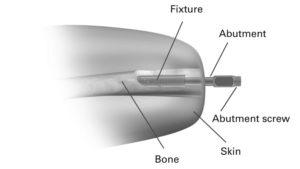While the FDA and other countries equivalent agencies are still studying the possibility of surgically attached prosthetic devices, they have unexpectedly found themselves being used by a dog that is missing her two rear legs. This technology was initially designed for human limbs, but it has found itself struggling to be approved by the FDA due to the potential for infections and the long recovery time. However, the requirements for these kinds of implants are less stringent for pets, so the emergent prosthetic technology has found itself employed on an unexpected patient. Shila the dog is the lucky dog who was given back her mobility thanks to a team of Polish vets, who bent over backwards to help the adorable pup.
Two-year-old mutt Shila lost both of her rear legs due to a pretty horrific lawnmower accident in the eastern Polish town of Lublin. The accident left her permanently disfigured and with serious mobility issues. The injuries required her to drag her rear leg stumps behind her, something that could have been potentially dangerous during her recovery, and lead to new wounds that could have become infected. Typically if pets sustain injuries that prevent them from a high quality of life the choice is made to humanely euthanize them.For many pets with mobility injuries, 3D printing has been a huge game changer that is giving plenty of animals a second chance. Most of the 3D printable solutions for disabled pets are things like 3D printed pet wheelchairs or more traditional prosthetic limbs. But Polish veterinarian Ryszard Iwanicki decided to use a groundbreaking surgical solution that gave Shila a pair of permanent leg prosthetics. The procedure was performed at the local Centre For Small Animals clinic by Iwanicki and the surgical team consisting of vet surgery specialist Artur Sokołowski and vet surgery specialist Michał Stelmaszyk.
According to Iwanicki the planning stage of the operation took his team more than three months to complete, and he even flew all the way to London to meet the vet who was the first to have ever performed such a complicated surgical procedure. His team of vets also consulted with multiple colleagues in the Polish cities of Legionowo and Bialystok, where they travelled to meet with the vets. Once a design for the prosthetic was settled on Iwanicki used the Leszek Olbrzymek company located in the nearby town of Pulawy in the Lublin Province. The operation, the first of its kind in Poland, was completed on June 2, taking Sokołowski and Stelmaszykjust four hours to perform.
“She began to walk really early. Now she is even trying to scratch behind her ear with the new back legs. It makes us very happy,” Iwanicki told the Daily Mail.
The rear limb prosthetics were 3D printed in titanium materials and designed to attach to a patient’s real bone. The implant is 3D printed with a very small and complex geometry that will eventually that will eventually lead to the real bone growing into the implant and fusing the two together permanently. The vets now simply need to monitor Shila and make sure that she doesn’t reject the limbs. She will also need to regain the strength in her rear limbs, a process that could take several months. Updates are being offered (in Polish) on a Facebook page for Shila. Discuss further in the Shila’s 3D Printed Legs forum over at 3DPB.com.
[Sources: Daily Mail, Wiadomosci / Images: CEN via Daily Mail, Facebook, Lubelski Kurier]
